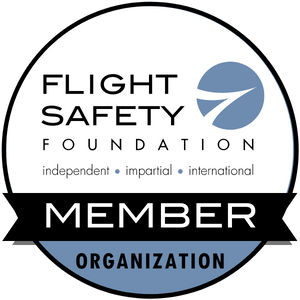What Does Data Within an Airline SMS Reveal and How Can You Use it to Prevent Accidents?
Safety Management Systems (SMS) play a pivotal role in ensuring the safety of aviation operations. Within the framework of SMS, data takes center stage as a valuable asset for understanding safety trends, identifying potential hazards, and implementing preventive measures. In this interview, we spoke with Jim Gautrey, a long-time aviation operator and subject matter expert in SMS, with experience across the ecosystem, from business jet operators, airports and airlines, and as a key consultant. He is a nominated safety person with several organizations, and a key member of the Centrik team.
Safety Reporting: Unveiling the Hidden Risks
Safety reporting forms the backbone of an effective SMS. It provides a comprehensive picture of safety events, including accidents, incidents — and near misses. The most crucial aspect of safety reporting lies in the near-miss reports, which shed light on potential hazards before they escalate into accidents. By analyzing safety reports, aviation organizations can identify recurring issues and patterns, enabling them to develop targeted safety measures.
Risk Management: Calculating and Mitigating Potential Risks
While safety reporting informs an operator of past events, risk management allows us to proactively assess potential risks. In SMS, risk is calculated by evaluating the likelihood and severity of incidents occurring. The risk matrix acts as a decision-making tool, helping aviation professionals determine acceptable risk levels. By understanding the calculated risks, organizations can allocate resources strategically and prioritize risk mitigation efforts to prevent accidents.
Safety Investigations: Delving into the Root Causes
Safety investigations go beyond immediate fixes. Instead, they focus on understanding the root causes of safety events. By asking “why” repeatedly — like a small child might ask over and again to their parent — accountable managers can uncover deeper issues contributing to incidents. These investigations enable organizations to implement corrective actions at their core, ensuring long-term accident prevention.
Safety Assurance: Ensuring Effectiveness of Safety Measures
Safety assurance is an integral part of SMS, where organizations verify the effectiveness of implemented safety measures. Regular audits and compliance monitoring ensure that safety protocols are adhered to and that risk mitigations are functional. By connecting audit findings to risk mitigations, aviation entities gain insights into areas that require improvement and can continuously enhance their safety practices.
Leveraging Data for Data-Driven Decision Making
SMS data — like that found in TrustFlight’s Centrik solution — is a font of knowledge. That knowledge — collected through safety reporting, risk management, safety investigations, and safety assurance — empowers aviation managers with valuable insights towards create a safety culture. Data-driven decision-making allows safety professionals to identify emerging trends and make informed choices to prevent accidents. By leveraging data analysis, organizations can implement proactive safety measures and monitor the effectiveness of their safety initiatives.
The Roadmap to a Compliant SMS
The data tell a story. But, how do you even start to establish a compliant SMS. It all requires careful planning and implementation. A step-by-step roadmap involves:
- Setting clear safety goals and objectives
- Developing robust safety reporting procedures to capture relevant data
- Implementing a risk management process to assess and prioritize risks
- Conducting thorough safety investigations to understand root causes
- Integrating safety assurance and compliance monitoring for ongoing improvement
- Utilizing advanced SMS software, such as Centrik, to streamline data management and analysis.
SMS data is a powerful tool that aviation organizations can utilize to enhance safety and prevent accidents. By leveraging safety reporting, risk management, safety investigations, and safety assurance, aviation professionals gain valuable insights into their operations. Data-driven decision-making enables proactive safety measures, and a compliant SMS ensures continuous improvement. Through these concerted efforts, the aviation industry can foster a culture of safety and pave the way for accident-free skies.
Let's get started
Talk to our sales team to find out how you can transform your operation with our products and services.

